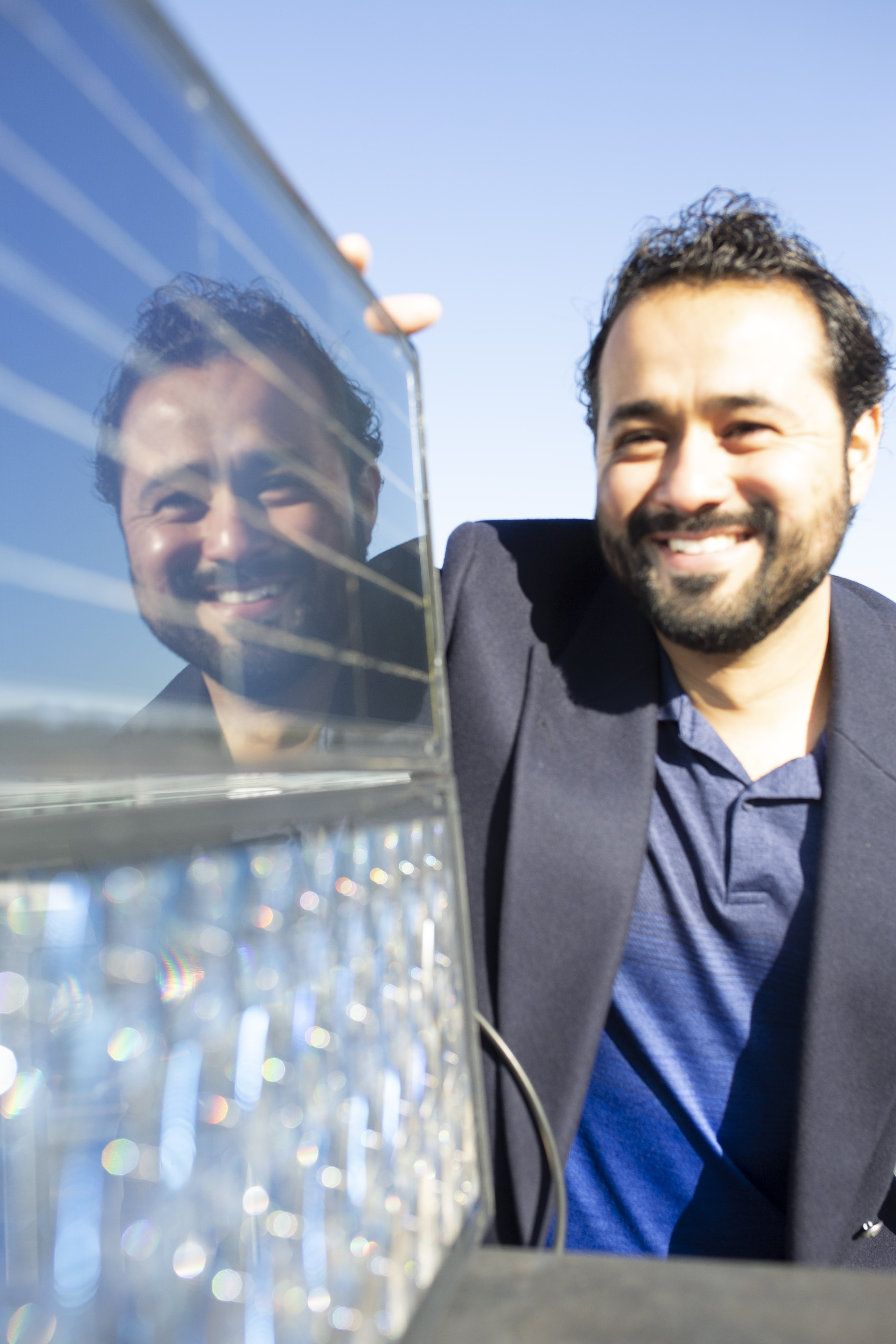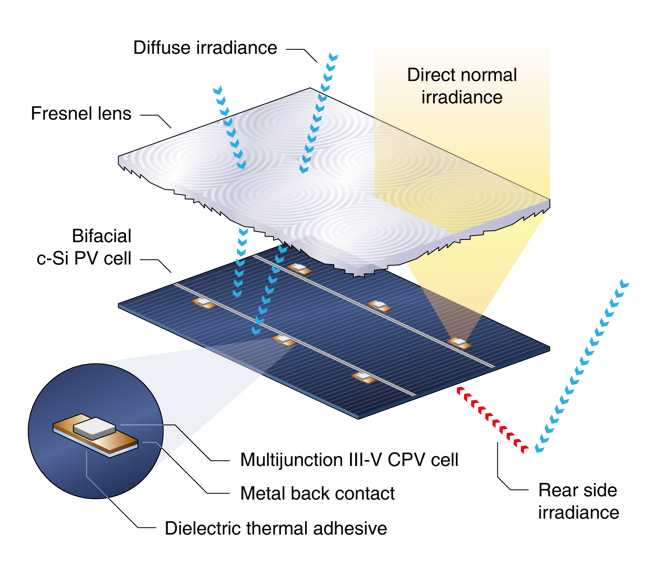Juan Francisco Martínez Sánchez Wins the Gips-Schüle Young Scientist Award for his Development of a High-Efficiency PV Hybrid Concentrator Module
Juan Francisco Martínez Sánchez, a researcher at the Fraunhofer Institute for Solar Energy Systems ISE, received the Gips-Schüle Young Scientist Award this week for combining concentrator PV technology with a conventional silicon photovoltaic (PV) module. The decisive innovation is that the hybrid PV module uses not only direct sunlight, which is concentrated by lenses onto miniature concentrator solar cells no bigger than several millimeters in size, but also diffuse, or scatttered, sunlight thanks to silicon solar cells. With this innovative concept, a bifacial PV module was able to achieve a power output of 350 watts per square meter for the first time worldwide.

Silicon photovoltaics currently accounts for more than 95 percent of the global market. However, the conversion efficiency of silicon photovoltaics is limited to 29.4 %, the theoretical maximum efficiency of a single-junction silicon solar cell. Concentrator photovoltaics (CPV) using so-called multi-junction solar cells made up of multiple layers of III-V semiconductors can achieve higher efficiencies. Four-junction solar cells already achieve efficiencies of up to 47.6 percent under concentrated sunlight. One disadvantage of concentrator photovoltaic modules, however, is that they can only use direct sunlight, since diffuse light, produced for example by cloud cover, cannot be focused by optical lenses. For this reason, the concentrator photovoltaic technology has been used up to now primarily for PV power plants located in the Earth's sunbelt.
Combining the Advantages of the Two Technologies
Here the different technologies in the hybrid CPV/PV module, pursued by Juan Martínez in his doctoral dissertation at INATECH, the Department of Sustainable Systems Engineering at the University of Freiburg, demonstrate their advantages. In his work, he effectively combined a concentrator PV module with large-area silicon solar cells to efficiently convert both direct and diffuse sunlight into electricity. Miniature III-V multi-junction solar cells were bonded to custom-made silicon solar cells for this purpose. Fresnel lenses focus the incoming direct sunlight onto the III-V solar cells, where it is efficiently converted into electricity. Diffuse and scattered light from the front and back of the module are converted to electricity by the silicon solar cells, which also contributes to the power output.
This approach has made it possible for the first time to demonstrate a PV module with an output power of 350 watts per square meter surface area. A key advantage is that this module is also suitable for locations in Europe. "I wanted to extend the geographic applicability of CPV technology to regions with high electricity demand, such as in Europa, where the percentage of direct solar radiation is lower," says Juan Sánchez. For locations in Germany, the silicon solar cells in this hybrid PV module contribute about 25 percent of the module's annual electricity output. The III-V concentrator solar cells provide the rest.

New Method Developed to Determine Performance
The hybrid PV module, called "EyeCon,” is equipped with silicon solar cells and four-junction concentrator solar cells. The module efficiency has been officially included in the internationally recognized table for solar cell efficiencies, published regularly by the journal Progress in Photovoltaics. In order to achieve this, Martínez first had to develop a performance evaluation procedure for dual-axis tracking hybrid PV modules which was evaluated by international specialists. The new procedure, developed by Martínez, now serves as the basis for discussions on the establishment of new standards to determine the performance of hybrid CPV/PV modules by the International Electrotechnical Commission.
"We are delighted to receive this award from the Gips-Schüle Foundation," says Dr. Frank Dimroth, department head of III-V Photovoltaics and Concentrator Technology at Fraunhofer ISE. "The EyeCon module is the most efficient technology for converting sunlight into electricity and we hope to bring this idea from the lab to the market soon. We are currently looking for partners to commercialize this technology."
The Gips-Schüle Young Scientist Award of the Gips-Schüle Foundation annually honors outstanding doctoral theses in the fields of mathematics, computer science, natural sciences and technology (MINT) from Baden-Württemberg.
Last modified: